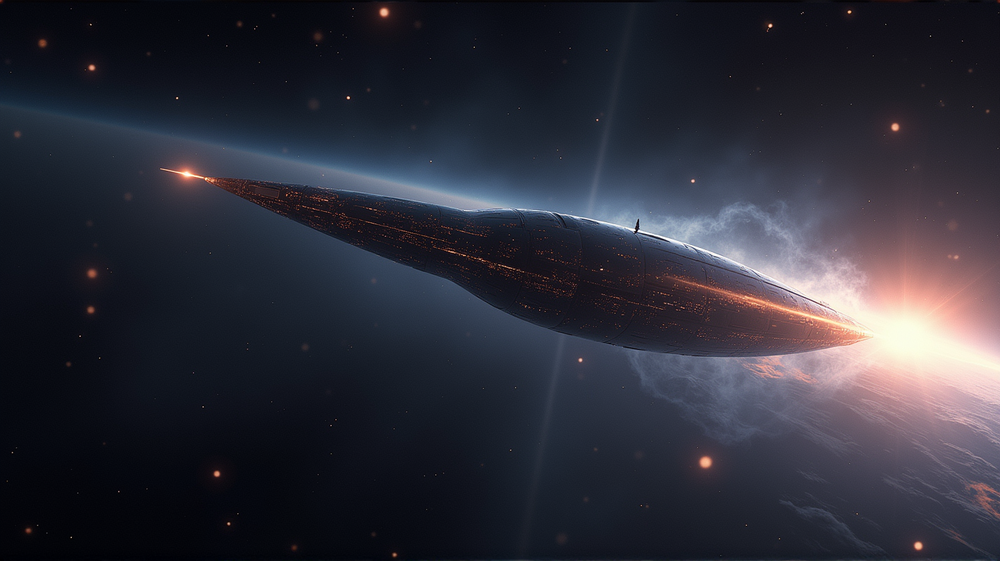A Harvard professor suggests an interstellar object could be an alien intelligence test
In an astonishing claim that could reshape our understanding of the universe, Harvard professor Avi Loeb has proposed that a peculiar interstellar object, currently hurtling towards Earth, may not be just a piece of space debris. Instead, it could be an advanced alien craft, sent on a mission to test our intelligence. As stated in his bold assertion, Loeb believes this is an opportunity the scientific community cannot afford to ignore.
The Enigmatic Object: 3I/ATLAS
The object in question, named 3I/ATLAS, has sparked intrigue and debate among astronomers worldwide. Unlike typical space bodies, this entity is reportedly generating its own light, leading Loeb to liken its glow to “a vehicle turning on its headlights.” With its mysterious luminosity and advanced speed, discussions are ongoing regarding its true nature. Loeb’s theory posits that rather than being a natural comet, it could potentially be a spacecraft powered by nuclear technology.
A Call to Action: Intercept or Communicate?
According to Daily Express US, Professor Loeb envisions using NASA’s Juno spacecraft as a potential emissary to intercept 3I/ATLAS. He suggests that if strategically accelerated, Juno could rendezvous with the object by March 2026, allowing us to probe its nature and possibly establish communication. His proposal, however, faces skepticism, with some researchers arguing about the feasibility due to the object’s extreme velocity.
A Strategic Encounter with Jupiter
Interestingly, Loeb points out a unique celestial alignment that could turn speculative thoughts into actionable insights. As 3I/ATLAS approaches Jupiter, it offers a rare opportunity to repurpose existing space assets, like Juno, to study this object closely. If successful, this daring maneuver could yield unprecedented information regarding extraterrestrial life and technology.
Racing Towards Mars
Not stopping at Jupiter, Loeb highlights another forthcoming approach towards Mars. In October, 3I/ATLAS will be astonishingly close to the red planet, prompting suggestions to deploy the HiRISE camera aboard the Mars Reconnaissance Orbiter to capture high-resolution images. This could further unravel the mysteries surrounding this celestial enigma.
A Chance of a Lifetime?
Within the scientific community, opinions remain divided. While numerous experts caution against jumping to conclusions, the intrigue surrounding 3I/ATLAS and its potential implications cannot be understated. For many, it represents a cosmic puzzle, the likes of which mankind has never encountered before.
As we edge closer to uncovering these celestial secrets, Professor Loeb reminds us of the potential significance of this encounter. Whether 3I/ATLAS is revealed to be a groundbreaking discovery or not, it undeniably invites us to ponder our place in the universe and the possibilities extending beyond our familiar starry skies.












